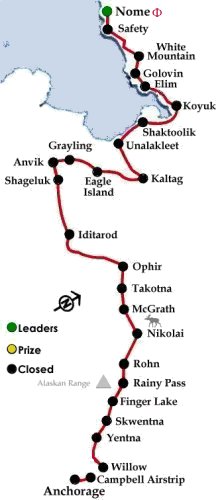Another “Glowing” Report
The BBC tells us Power hopes rise at Japan plant
Workers are close to restoring power to cooling systems at a quake-hit Japanese nuclear power plant, officials say.
Engineers connected a cable through which they hope to supply electricity to part of the Fukushima Daiichi plant.
…Radioactive contamination has been found in some food products from the Fukushima prefecture, Japanese officials say.
The iodine was found in products – reported to be milk and spinach – tested between 16 and 18 March and could be harmful to human health if ingested, the officials said.
…Traces of radioactive iodine have also been found in tapwater in Tokyo and five other prefectures, officials said on Saturday.
The traces are within government safety limits, but usual tests show no iodine, the AP news agency reported.
… [Read more →]
March 19, 2011 2 Comments
Don’t Worry … Be Happy
The CBC reports on a Japanese government announcement: Japan food radiation above safety limit
Spinach and milk from two regions near Japan’s stricken nuclear plant are showing radiation levels above the legal safety limit, a Japanese official said Saturday.
But Yukio Edano, the chief cabinet secretary, said a person would have to drink the milk for a year to ingest as much radiation as in a CT scan. A year of the spinach would amount to about one-fifth of a CT scan.
“It’s not like if you ate it right away you would be harmed,” Edano told reporters in Tokyo as Japan’s nuclear crisis entered its second week. “It would not be good to continue to eat it for some time.”
…The contaminated milk was found 30 kilometres from the troubled Fukushima Daiichi nuclear complex, and the spinach was collected between 80 and 100 kilometres to the south, Edano told reporters in Tokyo.
If there is radiation in the milk, the cows and pastures are irradiated, and the level is much higher for them to have it still detected in the milk. One doesn’t normally schedule cows for regular CT scans. Further, milk is normally ingested daily by children, and it is used, by definition, as the basic ingredient for all dairy products.
In addition, “between 80 and 100 kilometres to the south” is not near to the site, and is well outside the warning zone. No one wants their food enriched with caesium-137.
March 19, 2011 Comments Off on Don’t Worry … Be Happy
Iditarod 2011 – Day 14
 Justin Savidis (63) lost two places in the run from White Mountain to Nome, but that has been the only change in positions overnight.
Justin Savidis (63) lost two places in the run from White Mountain to Nome, but that has been the only change in positions overnight.
Ellen seems to have a bit more speed than Heather, and may be planning to “lose” the Red Lantern after White Mountain, but Heather will surely notice her action. There is a full moon and obvious trail, so racing is still possible at this point, even though the teams are tired. Update: They are two minutes apart at White Mountain. Ellen really doesn’t want a second Red Lantern.
Nicolas Petit (14) literally limped in to win the rookie race. He broke a bone in his foot on the trail before Unalakleet.
Robert Nelson (51) made it into the top 20 with his right arm strapped to his side after he dislocated his shoulder on the trail before Eagle Island.
He was followed in by Rick Swenson (49) who has been wrapped like a Christmas package after breaking his collarbone on Happy River Steps.
When G.B. Jones gets in it is hoped that his right eye is looking a lot better that it did in Nikolai. He “kissed” the ice on the “Glacier” outside of Rohn.
At Nome
33 Magnus Kaltenborn (22)R
34 Paul Johnson (46)
35 Cain Carter (48)R
36 Wattie McDonald (38)
37 Billy Snodgrass (24)
38 Gerald Sousa (62)
39 Justin Savidis (63)
40 Matt Giblin (60)
41 Tom Thurston (25)
42 Scott Janssen (32)R
43 Angie Taggart (19)R
Beyond White Mountain
44 Kirk Barnum (47)
45 G.B. Jones (40)
At White Mountain
46 Heather Siirtola (50)
47 Ellen Halverson (26) Φ [Read more →]
March 19, 2011 Comments Off on Iditarod 2011 – Day 14
The Most Difficult Job In The Universe
It has to be plumbing, since in less than a year I have watched highly paid petroleum scientists, engineers, and technicians spend months to fix a leaking pipe, and now I’m watching nuclear scientists, engineers, and technicians trying to get water into a building.
The BBC reports that Japan raises nuclear alert level
Japan has raised the alert level at its quake-damaged nuclear plant from four to five on a seven-point international scale of atomic incidents.
The crisis at the Fukushima Daiichi site, previously rated as a local problem, is now regarded as having “wider consequences”.
…Japanese nuclear officials said core damage to reactors 2 and 3 had prompted the raising of the severity grade.
The 1979 incident at Three Mile Island in the US was also rated at five on the scale, whereas the 1986 Chernobyl disaster was rated at seven.
…
[Read more →]
March 19, 2011 2 Comments


































